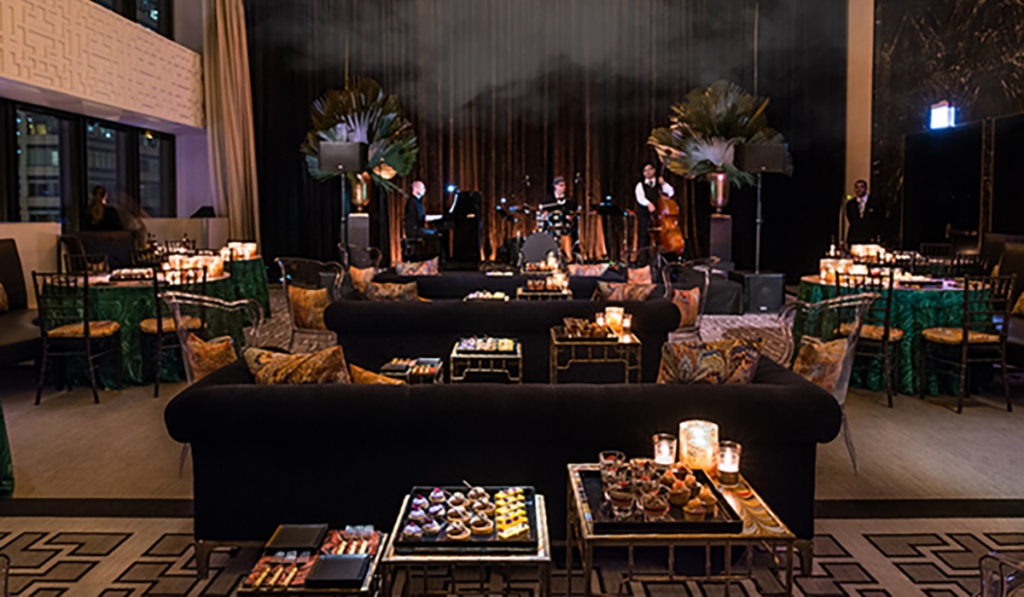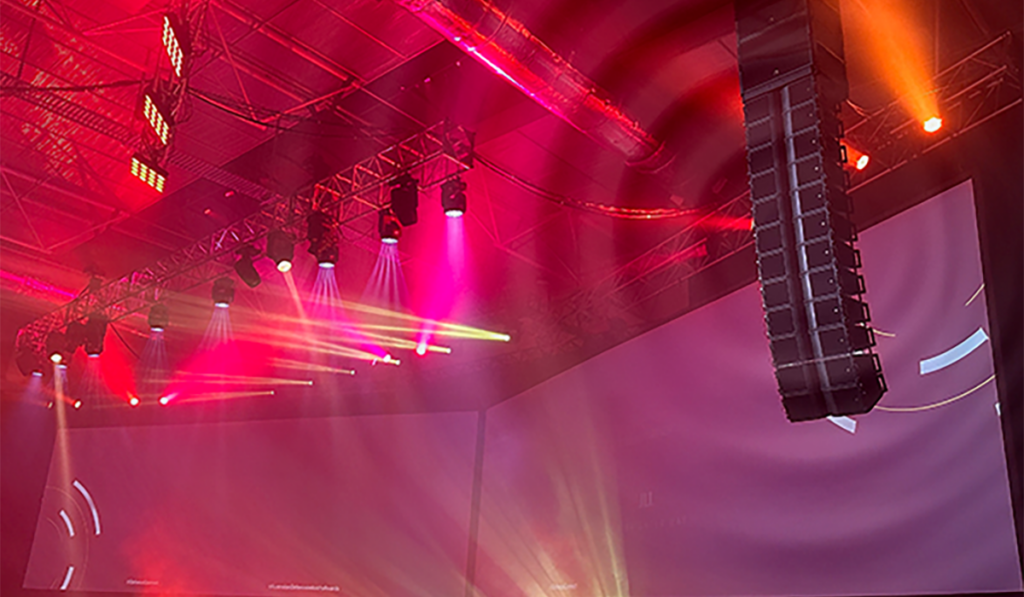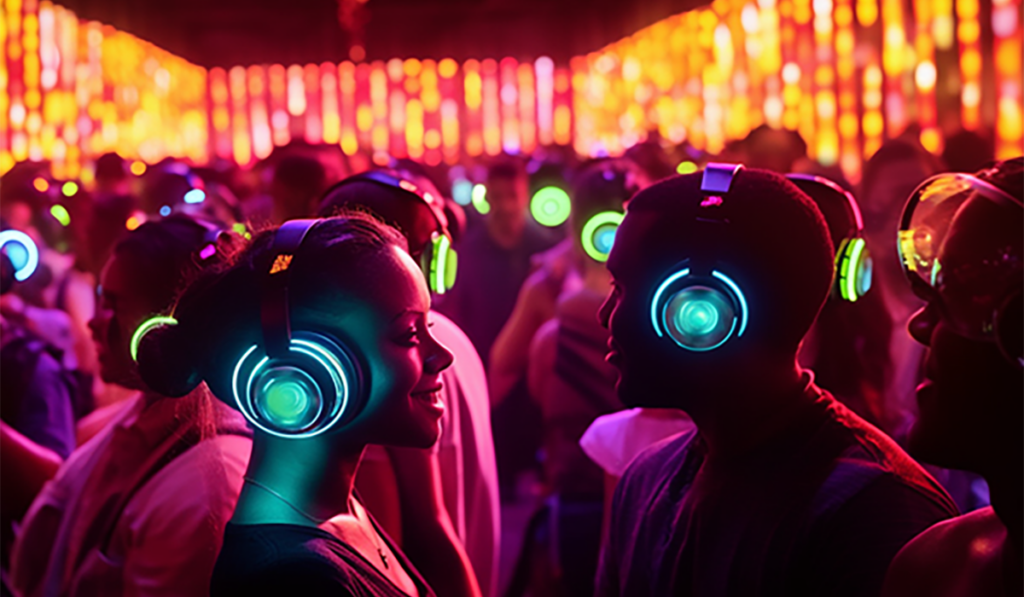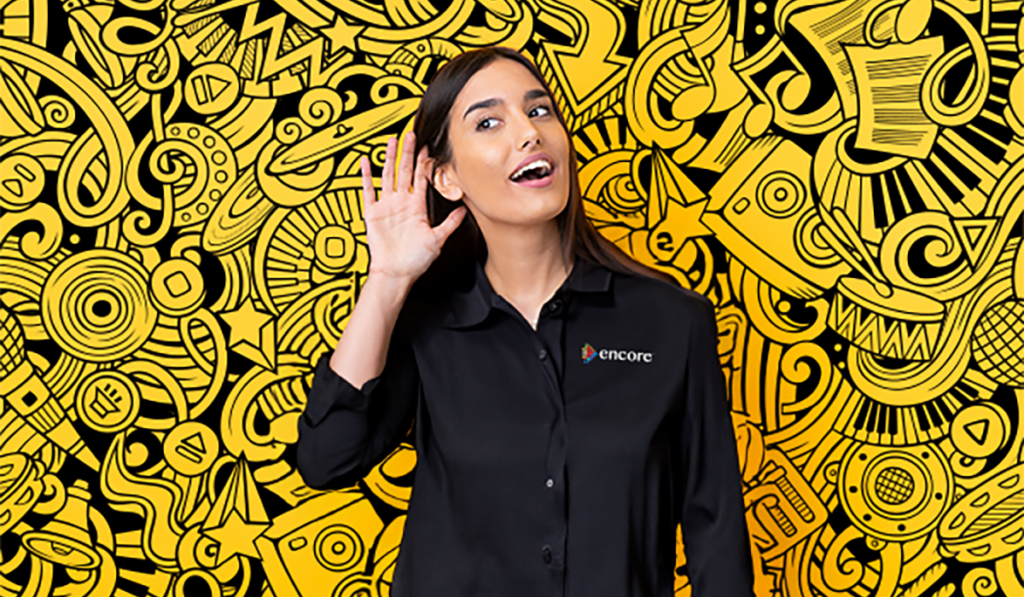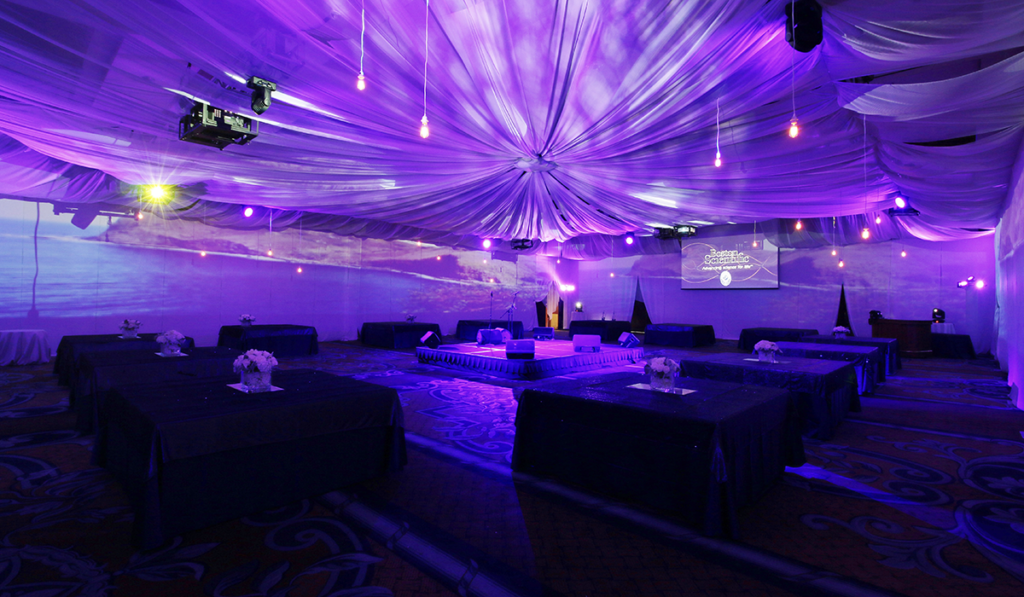When it’s time to select your venue, a site visit is one of the most critical steps. Not only do you get to physically step in your space and imagine your event coming to life, it’s a chance to ask the most important questions with your potential venue team.
Unfortunately, so many of us are busy with the details of the space contracts and food and beverage minimums, that our time with AV providers is often cut short. On your next site visit, be sure to squeeze in some time with your AV partner and ask these questions to ensure a successful event.
What would you recommend to make a greater impact with my budget?
If you only ask one question, this is it. As planners, of course we have ideas right out the gate with an inspiration board – but no one knows the space better than an on-site event experience team. During your site visit, discuss your vision and ask what they would do to make it work within your plan and budget.
Because they have worked so many events within the very space you’re standing in, they can take the groundwork of your initial plan and elevate it – whether it’s rigging screens differently for new vantage points or trying new seating levels. This discussion can change the whole direction of your event and catapult it to new heights.
What other services do you offer?
These days, AV companies do so much more than just audio-visual. With teleconferencing, content design, and event internet, the same company will likely be able to provide you with almost everything you need for your event. So, before you start the taxing process of looking around for extra technology quotes, be sure to explore the opportunity of leveraging your in-house partner.
Are there any exciting new technologies I can employ?
It’s the old adage of “if you don’t ask, you don’t know.” Technology changes rapidly, and there may be something new on the horizon offered by your event partner. Maybe it’s a new mobile engagement app that could be a great way to show meeting value to your stakeholders. Your provider will be eager to talk to you about everything they have – you just have to ask!
Who will be my point of contact, and how hands-on will they be?
Don’t wait until you’ve already signed a contract to ask this question (or worse, until there’s a day-of crisis). Ask up-front how big their team is, and who will handle which parts of your meeting. It’s also a good idea to find out if the entire team will be on-site, or if there is an off-site team (for example, in the case of internet), so you know exactly what you’re dealing with going into your meeting and who’s on first.
What information do you need from me?
Communication is a two-way street, and your event partner may have some questions for you as well that will spark some ideas. Be sure to open up the conversation and make sure they have a full understanding of what you’re trying to accomplish up-front to avoid complications later on.
Takeaways
Arming yourself with these questions for your event partner during your site visit can instill confidence in your decision with venue selection, and ensure a seamless event from the start with a team that understands your goals.
Produce a memorable experience for your meeting participants
In today’s ever-changing landscape, the way people consume content has undergone a rapid transformation. What does this mean for meeting and event professionals? You’ve likely faced unique challenges in capturing (and keeping) your audience’s attention to deliver a memorable experience. Let’s consider some key trends that contribute to these hurdles.
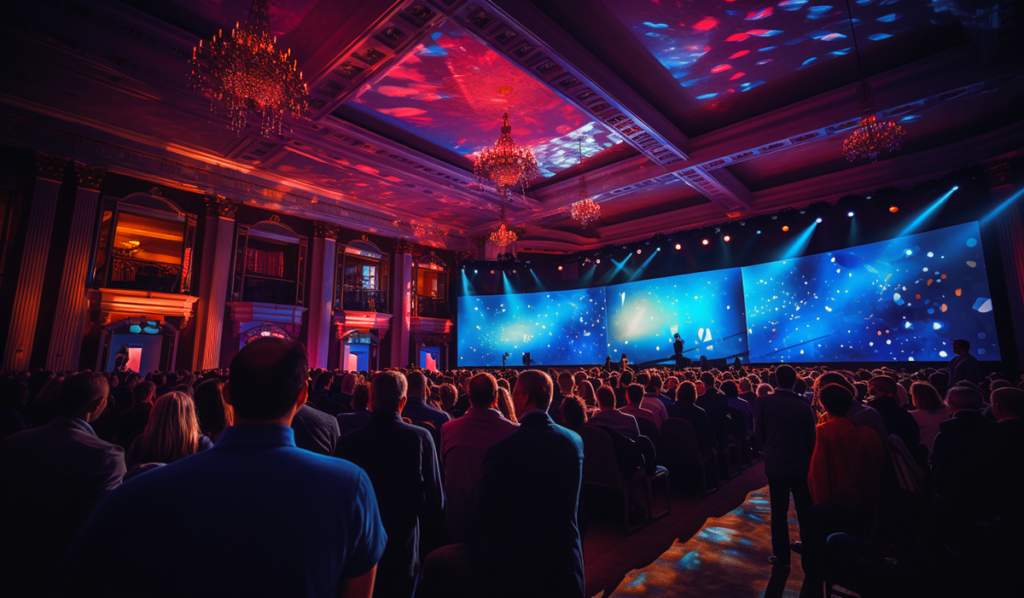
- Shortened attention spans:
With the proliferation of smartphones, the average adult’s attention span has significantly decreased. Encouraging participants to disconnect from their devices has become more challenging than ever.
- Greater production value behind content:
When it comes to the crowd-pleasing content people routinely engage with, even singular episodes of popular series have soaring production value. Episodes of The Crown cost an average of about $13 million, and high-end streaming dramas like Stranger Things now see price tags of $4 to $7 million per episode.
- More targeted, digestible media:
Thanks to platforms like TikTok, which deliver fast-paced, hyper-targeted content to 1.67 billion users, many of your attendees expect pithy and punchy messaging, picked specifically for them. Your tech-savvy participants are used to being able to find, filter and immediately interact with the type of content they already like, thanks to the platform’s scarily effective algorithm. If you want to earn (and keep) attendees’ attention in today’s digital landscape, your content needs to meet their higher expectations.
Considering the impact of these trends, it has become more difficult to entertain and engage an audience — while easier than ever to distract them. So, how can you ensure your content is compelling and has a lasting influence? Read on for insights that can help you revolutionize your storytelling.
Get my FREE content consultation!
Engagement is a metric that matters
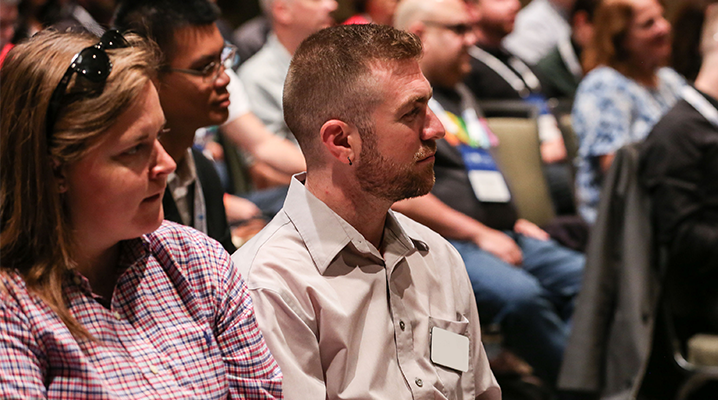
A recent Encore survey revealed that planners prioritize attendee engagement and advanced content delivery. To revamp your content strategy and recapture the hearts and minds of your audience, here are three powerful approaches to consider:
- Cultivate community through content
Remember the viral Ice Bucket Challenge, which united people around a common cause? It brought ALS, and the ALS Association’s mission, to the forefront of Americans’ minds (and phones).
The content developed around the social media challenge was not only attention-grabbing but also prompted immediately achievable action.
Taking part was cheap, easy (except withstanding the ice water part), enthralling and, most importantly, repeatable. Meanwhile, the call to action rallied individuals into a community for a shared goal.

Photo credit: ALS Therapy Development Institute
2. Craft Your storytelling as a unifying thread
Your content should seamlessly weave a compelling narrative throughout the entire attendee journey, from initial contact to post-event communications. However, avoid generating content that merely starts and ends there.
While the content onstage might be the main focus during your sessions, to deliver truly resonant messaging, consider how your programming ties into the tentacles of broader, ongoing conversations within your audience’s communities. By designing content that’s relevant to your participants and what’s going on in the world around you, you can leverage your meeting as a chapter in a much larger and powerful discourse.
3. Appeal to your guests’ emotions for lasting impact
Some of the most memorable event moments are emotionally charged rather than purely intellectual. Consider award shows in pop culture, where speeches, interactions and reactions generate buzz for days, weeks and even years.
Ultimately, you want your program to live on with a life of its own, and fueling similarly strong emotive responses is a great way to drive connections with your content. Is yours designed with that intent? Is it working hard enough to become unforgettable for your attendees? If the answer is no or you’re unsure, think through how you can better speak to and influence attendees’ emotions through your storytelling.
We’d love to help you do just that! Our Creative Services team dreams big when it comes to crafting inspiring content, amplifying it through strategic event branding and design, and influencing the purposeful connections that set programs apart.
Want a sneak peek into our capabilities? Explore some of the riveting content we created for Marriott International’s exclusive three-day conference for their general managers that created a customized experience just for them!
Let’s partner on incorporating these content strategies into your planning process for a program that captivates participants and extends the reach of your message well into the future.














